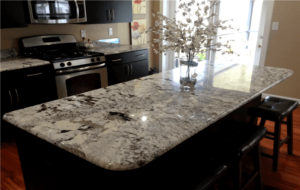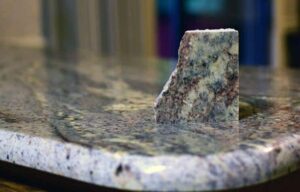When planning a kitchen renovation, the choice of countertops often takes center stage. In fact, countertops play an integral role not only in the kitchen’s functionality but also in its overall style and character. One particularly important—and sometimes overlooked—aspect is countertop thickness. Whether you’re envisioning sleek modern countertops or a traditional kitchen with classic charm, the thickness of your countertop can drastically alter the kitchen’s appearance, durability, and daily use.
In the world of interior design trends, countertops have evolved beyond simple slabs of stone or laminate. Today, homeowners can opt for ultra-slim surfaces that offer a minimalist and streamlined feel, or thick, hefty slabs that exude luxury and sturdiness. By understanding how countertop thickness interacts with material choice, kitchen style, and functionality, you’ll be better prepared to create a space that is both aesthetically pleasing and exceptionally practical.
In this article, we will explore how different countertop thicknesses affect your kitchen design, detailing the pros and cons of thin countertops versus thick countertops, and offering insights on how to balance aesthetics and functionality. Whether you’re a homeowner, a kitchen designer, or simply a design enthusiast, this guide will help you make informed decisions about one of your kitchen’s most visible and functional features.

How Countertop Thickness Influences Kitchen Style
Creating Visual Impact Through Thickness
Countertop thickness directly impacts how your kitchen will look and feel. A thicker slab can make a strong, eye-catching statement, drawing attention to the horizontal plane and anchoring the overall design. A thinner slab, on the other hand, can visually lighten the space, offering a more contemporary aesthetic that appeals to those seeking a modern or minimalist vibe.
Resonating with Modern and Traditional Designs
- Modern Countertops
Thin countertops align perfectly with sleek cabinetry, open shelving, and minimal hardware typical of modern kitchens. Their streamlined look pairs effortlessly with contemporary materials such as stainless steel or high-gloss cabinets. - Traditional Kitchen
Thick countertops often lend themselves better to traditional or transitional designs. They convey a sense of weight and permanence that complements intricate woodwork, rustic finishes, and classic details.
By assessing your own style preferences—whether that leans toward a modern or a traditional kitchen—you can determine which thickness best complements your overall vision.
Thin Countertops: Advantages, Style, Materials, and Design Examples
Advantages of Thin Countertops
- Modern, Minimalist Appearance
Thin countertops typically measure around 1 to 2 centimeters in thickness. Because of their slender profile, they naturally complement contemporary and modern kitchen aesthetics. The refined, sleek silhouette can make a smaller kitchen appear more open and airy. - Cost-Effective for Certain Materials
In many cases, thinner slabs use less material, which can lead to cost savings depending on the type of stone or composite you choose. This is especially true if you’re considering high-end options among the best countertop materials, such as quartz or marble, where material costs can escalate quickly. - Ease of Installation
Thinner countertops are often lighter, which reduces some of the labor challenges during installation. This can be beneficial if you’re taking on a kitchen renovation by yourself or working with a small team. However, they still require professional handling to avoid cracks or damage, especially for brittle materials like natural stone.
Style and Materials for Thin Countertops
- Quartz and Engineered Stone
Engineered quartz is popular for its durability and color consistency. Modern manufacturers offer slabs in thinner profiles, providing a sleek appearance without sacrificing strength. - Porcelain Countertops
Porcelain can be manufactured in ultra-thin sheets (as slim as 6mm to 12mm) without losing structural integrity. This material is also highly resistant to stains and heat, making it ideal for busy kitchens. - Laminate
Laminate surfaces can be made in slim versions and are a budget-friendly option. They can mimic the look of natural materials, but their durability and heat resistance might not match that of engineered or natural stone.
Real-World Design Examples with Thin Countertops
- Scandinavian-Style Kitchen
A Scandinavian kitchen featuring white cabinetry, open shelving, and minimal hardware can benefit from an ultra-thin white quartz countertop. The lighter countertop thickness works with neutral tones to emphasize brightness and simplicity. - Urban Loft Design
In an industrial-themed loft, a dark, ultra-thin porcelain countertop paired with stainless-steel appliances can offer a modern, edgy flair. The slim profile harmonizes with raw, exposed elements like brick walls and metal fixtures. - Mid-Century Modern Home
Thin laminate countertops in retro hues can complement the vintage cabinetry and geometric patterns typical of mid-century modern designs. Their streamlined edges blend seamlessly into angular architecture.
Overall, thin countertops provide a sleek, modern look that suits a variety of design styles, from minimalistic to industrial. However, they may require additional support or lamination on edges, depending on the material and the cabinetry underneath.
Thick Countertops: Advantages, Style, Materials, and Design Examples
Advantages of Thick Countertops
- Luxurious Appearance
Thick countertops typically measure around 3 to 6 centimeters, exuding a sense of luxury and weightiness. This thickness is particularly striking when using bold natural stones with distinctive veining or patterns, such as marble or granite. - Enhanced Durability
A thicker slab generally offers extra strength, which can be especially valuable in high-traffic kitchens. While the exact durability also depends on the material itself, the added bulk can help resist cracks and chips. - Timeless Appeal
Thick countertops have a longstanding association with traditional and high-end kitchen design. Their substantial profile tends to hold up well over time, both structurally and aesthetically.
Style and Materials for Thick Countertops
- Natural Stone (Granite, Marble)
Granite and marble are popular for thick countertops due to their timeless appeal and unique veining. However, keep in mind that a thick slab of marble can be heavy and may require reinforced cabinetry. - Butcher Block
Wood countertops, especially butcher block, are often installed in thicker sections (sometimes up to 2-3 inches) to emphasize their craftsmanship. They bring warmth and a rustic element to the kitchen. - Concrete
Concrete countertops can be custom-poured to any thickness, allowing for bold, dramatic statements. Modern sealing technologies have improved concrete’s stain resistance, making it a viable option if you want a thick, industrial-chic surface.
Real-World Design Examples with Thick Countertops
- Farmhouse Kitchen
A thick butcher-block countertop paired with white, Shaker-style cabinets creates a warm and inviting atmosphere. The increased thickness gives the countertop a strong visual presence, fitting in well with a farmhouse aesthetic. - Traditional Luxury Kitchen
In a grand, classic kitchen with ornate cabinetry and high-end appliances, a thick marble countertop can serve as the focal point. The opulent feel of marble’s natural veining is accentuated by its heavier profile. - Contemporary Concrete Island
For those seeking a unique statement piece, a thick concrete island becomes a conversation starter. Stained or polished concrete offers a smooth surface that can be paired with sleek cabinetry, achieving an avant-garde but welcoming design.
Despite their robust look and feel, thick countertops can be more expensive due to higher material usage and may require sturdier cabinet bases to support the extra weight.

Balancing Aesthetics and Functionality
The Role of Proportion
When choosing between thin and thick countertops, it’s important to consider the proportions of the space. For instance, an ultra-thick countertop might look out of place in a tiny urban apartment kitchen, while a super-thin countertop could appear too delicate in a grand, open-concept home. Strike a balance between the size of your kitchen, the scale of your cabinetry, and the statement you want to make.
Practical Considerations
- Maintenance
Thicker natural stone countertops may need more sealing and maintenance, especially if the material is porous like marble. Thin countertops made of engineered materials might be more stain-resistant but could also be more prone to chips or cracks if you inadvertently lean or drop heavy objects on them. - Budget
Thicker slabs often cost more, not just for the material itself but also for installation, which may require reinforced cabinetry and additional labor. Thinner countertops can be cheaper, but the final cost heavily depends on the material and edge treatments. - Lifestyle Fit
If you frequently cook and require a durable surface, a thicker option might be worth the investment, especially if it’s made of granite or quartz. On the other hand, if you prefer a modern look and can handle a more delicate surface, a slim countertop in porcelain or engineered stone may be just right.
Key Factors in Choosing the Right Countertop Thickness
Material Properties
Each material behaves differently at varying thicknesses. For example, a 2-centimeter granite slab might be sufficiently strong for normal use, while a 2-centimeter marble slab might be more vulnerable to cracking. Always consult with a professional fabricator to ensure the material you choose can safely be installed at your desired thickness.
Kitchen Aesthetics and Style
Your kitchen’s overall design scheme should guide you. Decide whether you want a bold, substantial feature that catches the eye, or a subdued, minimalistic appearance that harmonizes with other elements. Kitchen aesthetics can range from rustic farmhouse to ultra-modern, so let your personal style or the architectural style of the home dictate your countertop thickness.
Functionality and Usage
Think about how you use your kitchen on a daily basis. If you often cook large meals, host gatherings, or have kids doing homework at the counter, opt for a sturdier surface. Alternatively, if your kitchen is more of a showpiece or you rarely do heavy cooking, you might favor an elegant, thinner design.
Budget and Timeline
Finally, be realistic about your budget and renovation timeline. Thicker countertops might require a bigger financial commitment and could extend the installation schedule, especially if structural modifications are needed. Thinner countertops can fit more moderate budgets but may require more careful handling to avoid damage.
Conclusion: Key Takeaways and Recommendations
Choosing the right countertop thickness for your kitchen design is about more than just aesthetics—it’s also a matter of functionality, budget, and personal preference. Thin countertops offer a sleek, modern feel that can visually open up smaller kitchens or complement minimalist décor. Thick countertops, by contrast, lend a sense of luxury and sturdiness that can perfectly suit larger spaces or traditional kitchen designs.
Before you settle on a final decision, consider the best countertop materials for your lifestyle, the scale of your kitchen, and the look you’re hoping to achieve. Always consult a professional to ensure the material and thickness you choose will hold up to your daily cooking and usage habits.
Remember, the right thickness can elevate your kitchen aesthetics, enhance your home’s resale value, and make daily tasks more enjoyable. With proper planning and insight, you can strike an ideal balance between beauty and practicality in your kitchen renovation.
Internal Resource
- For more information on specific materials and their pros and cons, visit our Blog Post on the Best Countertop Materials.
External References
- National Kitchen and Bath Association (NKBA) – for guidelines on kitchen design and installation.
- HGTV’s Kitchen Design Section – for inspiration and design ideas.
- HomeAdvisor: Countertop Installation Cost Guide – for budgeting tips and typical installation costs.





